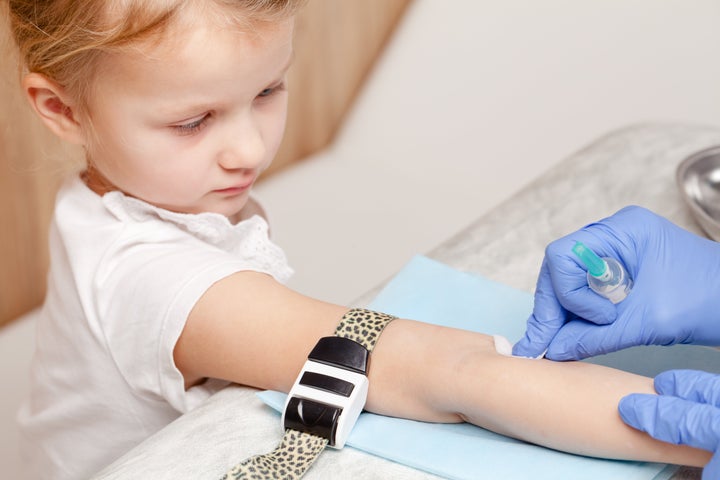I was dreading a visit to the local hospital. Not just because of Covid fears (our borough has some of the highest cases in London), but because of my eight-year-old daughter’s fear of needles. We had to go, because she needed a blood test. But how to reassure a child that it will be quick, relatively pain-free and most importantly, that it’s necessary?
I’ve always been the type of parent who tries to instil autonomy in my kids. I’ve tried to teach them they have full ownership of their bodies, and encouraged them to use the right names for different body parts, even when it’s caused friction. I’ve let them know that they don’t have to kiss ageing relatives at Christmas if they don’t want to, and that they always have the right to say “no”.
But sometimes, Mummy knows best. Especially when it comes to their health.

Reassuring my little girl that her blood test was important was tricky in itself – I didn’t want to worry her, or risk making it sound serious. Yet I also knew that children need to have a clear sense of what’s involved or what’s going to happen. Dr Amanda Gummer, child psychologist and founder of the Good Play Guide, previously told HuffPost UK that kids like familiarity and routine, so having a good sense of the steps involved can help minimise their fears.
Author and parenting expert Liat Hughes Joshi also recommends speaking to your children plainly, assuming they’re old enough to understand at a basic level (so, four or five plus), about a new routine or experience. “Sit them down in a nice relaxed way, perhaps with a hot chocolate or healthy treat. Call it a ‘family meeting’, if you like,” she said.
It’s important to explain to your kids why things need to be done, Joshi added, but emphasise that it’s something you can tackle together. So, that’s exactly what I did.
I told my daughter in advance why we needed to go to hospital – to get a test, to find out what might be going on inside her – and reminded her that she didn’t like feeling unwell. I told her that in order to find out what’s wrong, the doctors needed to examine her blood. We even read a book about it.
She wanted a blow-by-blow account of the procedure, so I explained they would probably give her some numbing cream to make it hurt less; tie something called a tourniquet around her arm, and use a small needle (at this point, there were tears) to draw blood from the inside of her elbow.
I said it would take no more than a minute, and even counted with her to 60 to show her how quick it would be.
I said she could take a teddy bear, could watch her favourite TV programme on my phone while it was happening... and have sweets. On a school day. At 9.30am. Yes, I am that parent. And I’m not ashamed to admit that sometimes, you just need to do whatever works.
“I’m not ashamed to admit that sometimes, you just need to do whatever works.”
And that’s exactly what we did. The hospital wasn’t rammed, and thankfully we were in the zone marked out for kids’ phlebotomy, where there were lots of other (masked) parents with young children waiting, just like us. When my daughter’s name was called, we went into the clinic room and she was able to sit on my lap while a kind nurse placed her left arm on a pillow.
She was momentarily thrown when they said there would be no numbing cream – I could sense her panicking, so I brought out my trump card: my mobile phone. We watched a compendium of the best moments from her current favourite TV series (1990s American sitcom Sister, Sister, as it happens) and they tied the tourniquet, explaining it would “make her fingers numb”.
She did say the scratch of the needle hurt, but almost as soon as she’d finished saying it, it was over; and we had hot chocolates in the waiting room outside to celebrate. Let’s just hope we’ll celebrate the results in a week or so, too.
